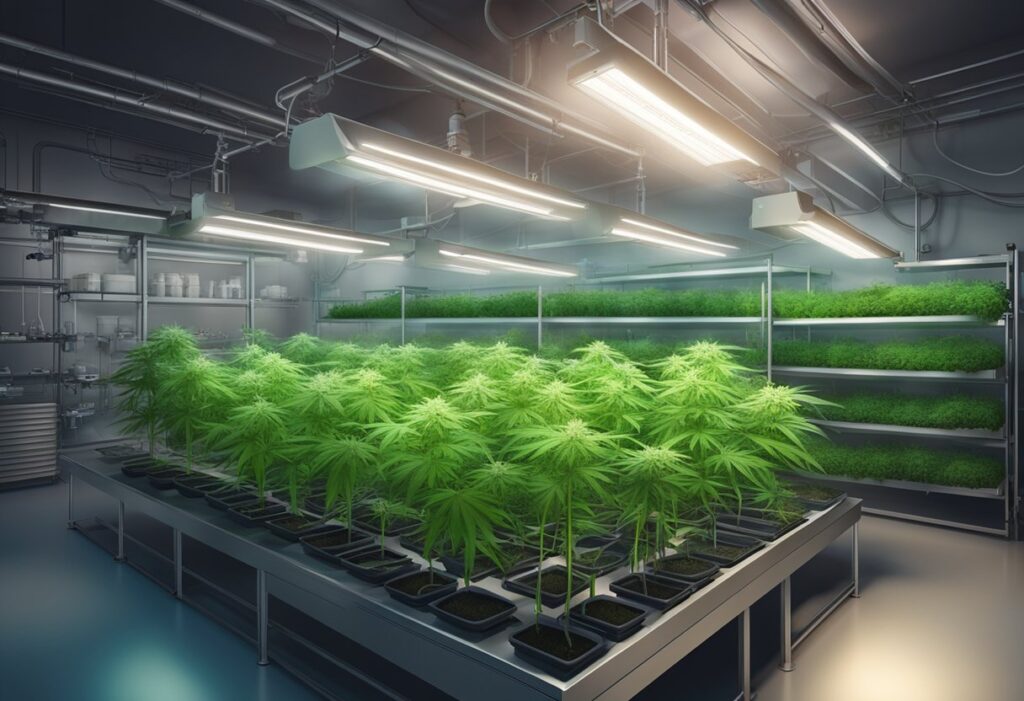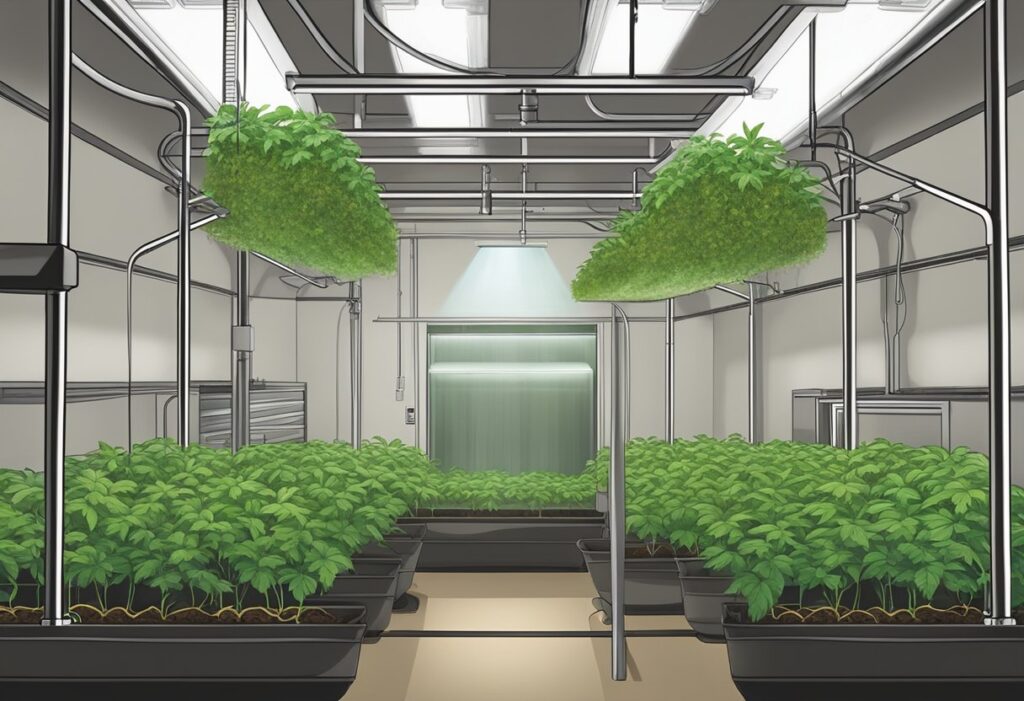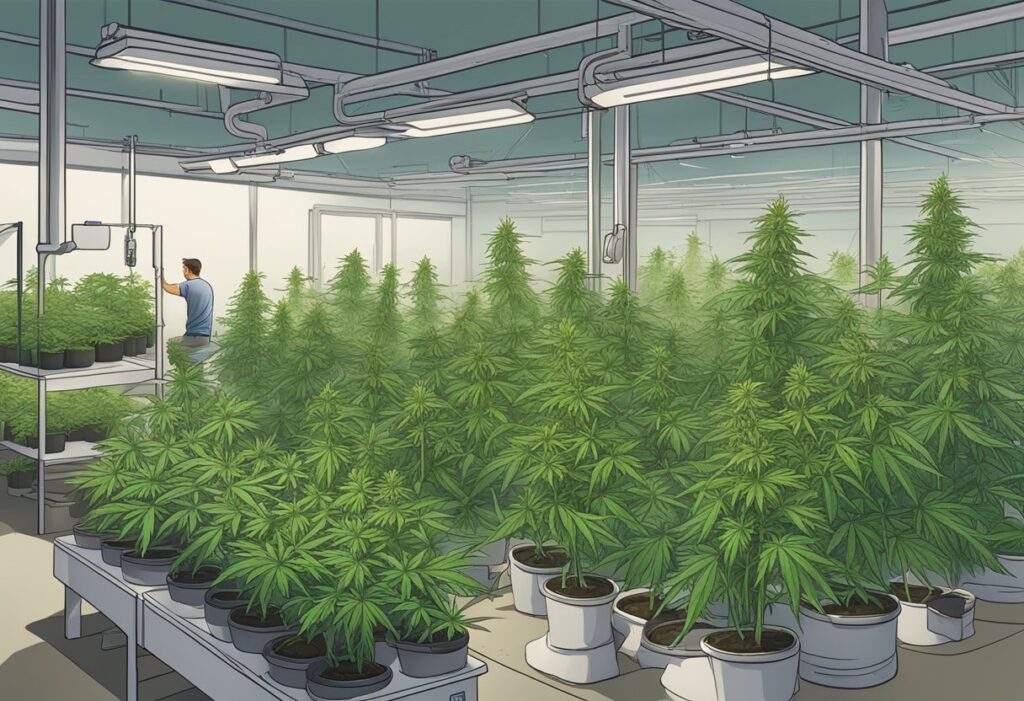
When you select autoflower seeds in Canada, you’re setting the stage for the success of your cannabis garden. Autoflower strains are known for their resilience and quick journey from seed to harvest. Here’s how you can optimize genetics and germination:
| Factor | Importance |
|---|---|
| Genetic Purity | Ensures consistent growth and yield. |
| Resilience | Enables plants to withstand varying climates and environmental stress. |
| Yield Potential | Identifies strains that promise a higher yield. |
For autoflowering cannabis strains, it’s vital to minimize stress from the start as there is little recovery time due to their fast-growing nature. Be delicate when you handle the young plants and provide consistent conditions to encourage vigorous growth. Remember, this early attentive care is key to achieving a bountiful, potent yield from your autoflower cannabis plants.

Crafting the perfect setup for autoflower cannabis plants leads to successful harvests and bountiful yields. Grasp these aspects of cultivation and you’ll see your autoflowers thrive under your careful watch.
Your autoflowers need well-draining soil with a balanced pH typically between 6.0 and 7.0. Begin with a soil mix rich in organic matter, ensuring essential nutrients like nitrogen, phosphorus, and potassium are readily available. As the plants develop, monitor for nutrient deficiencies and avoid lockout by adjusting pH and nutrient levels accordingly.
Full-spectrum LED lights are your go-to for indoor cultivation, as they mimic natural sunlight and promote vigorous growth. Aim for a consistent light schedule of 18-20 hours a day to maximize photosynthesis. Temperature control is crucial, so keep your growing environment within 70-85°F (21-29°C) with humidity levels around 40-60%.
Utilize low-stress training (LST) methods to create a more even canopy and increase light exposure to lower buds. This promotes an even growth and helps maximize yield. High-stress training (HST) techniques such as topping can also be used, but with care, as autoflowers have a shorter vegetative stage and less recovery time.
Harvesting your autoflowers at the right moment is critical. Inspect the trichomes with a magnifying glass: clear trichomes indicate immaturity, milky white suggest peak THC levels, and amber trichomes indicate high CBD. After cutting the main cola, trim any fan leaves and cure the buds properly to enhance their effects.
Recognizing the life stages of autoflowers—from seed to flowering—is key for optimal care. With a fast growth cycle, your plants will move quickly from seedling, through a brief vegetative stage, to flowering. Selecting high-quality autoflower seeds in Canada can ensure strong genetics, leading to a resilient and productive grow.
Remember, your skill level evolves with each grow cycle, allowing for continuous improvement of your setup and, ultimately, your yield. Whether you’re growing stealth in a small space or aiming for large-scale productivity, understanding and controlling these variables are the foundation of your success with autoflowers.

To achieve top-tier results in your autoflower cultivation, it is crucial to hone your expertise and quickly address any troubles. Mastery in advanced breeding, pest management, equipment optimization, and adhering to Canada’s legal framework sets a solid path toward success.
Your journey starts with advanced breeding and strain selection. By focusing on genetics that thrive in Canada’s unique climate, you optimize your grow cycle. Autoflower seeds in Canada are a cross of Indica, Sativa, and Ruderalis, offering a range of THC, terpene, and cannabinoid profiles with distinct flavors. Select strains that match your experience level and the desired effects, and you’ll witness consistency and efficiency in your autoflowering strains.
Managing pests and environmental stressors is non-negotiable for healthy cannabis plants. Establish a regimen for pest control that aligns with growth stages and lookout for signs of stress, such as nutrient deficiencies. Indoor tents can shield plants from many outdoor pests, but attention to cleanliness and environmental conditions is key. An integrated pest management (IPM) strategy will help maintain plant health throughout their life cycle.
Efficiency in equipment usage directly affects your yield and electricity costs. LED lights offer a full spectrum, promoting photosynthesis without excessive heat generation. High-quality tents and CO2 generators can be pivotal, but ensure water and equipment are managed to avoid safety hazards. Incorporating tracking systems can aid in maintaining optimal conditions for growth, ensuring your autoflowers have everything they need for each grow cycle.
Strict adherence to Canadian laws and regulatory considerations is mandatory. Ensure your grow operation complies with federal and provincial regulations regarding cannabis plants. From permissible plant counts to packaging and distribution, understanding your legal bounds protects you from potential consequences.
Engaging proactively in these areas equips you to navigate the complexities of autoflower cultivation with confidence and ensure your experience growing autoflowers remains both rewarding and compliant.
Autoflowering cannabis plants present unique opportunities and challenges, particularly in the variable Canadian climate. Your questions about how to improve harvest quality and quantity are addressed here, providing you with targeted advice to refine your technique.
For enhancing potency, make sure you have your trichomes and pistils inspected regularly as the plant matures. Your autoflower seeds in Canada need mostly cloudy trichomes with some amber ones before harvesting for maximum potency.
To boost yield, focus on CO2 generation and effective watering techniques. Ensure that your plants are exposed to sufficient sunlight or use LED lights tuned to the appropriate light spectrum to foster photosynthesis and plant growth.
The most effective mediums for autoflowering strains tend to be light and well-aerated soils or soilless mixes that allow for strong root development and efficient nutrient uptake.
Your autoflowers will thrive with a balanced nutrient schedule that’s rich in nitrogen, phosphorus, and potassium. Tailor this schedule as they grow, and consider using beneficial bacteria or mycorrhizae to enhance nutrient absorption.
The optimal time to harvest autoflowers outdoors is when the pistils are brown, and the trichomes display a cloudy appearance with touches of amber. This indicates peak cannabinoid production in your plants.
We ship and deliver world wide via USPS and various couriers.
We offer a wide range of secure and anonymous online payment options.
We care about you, our customer. Please contact us with any questions or concerns.
Find out more about the benefits of being a loyal and regular customer.
WE ARE EVERY GROWERS ONE STOP SHOP TO ACQUIRE PREMIUM CANNABIS SEEDS FOR SALE IN THE USA, CANADA AND AUSTRALIA

Farmers Lab Seeds 2024, | All Right Reserved
Seeds are sold as novelty items, souvenirs, and collectibles. They contain 0% THC. We encourage our customers to check the legislation in their Country, State, Province, and Municipality prior to purchasing items from our store. We do not provide growing information.
All seeds are sold as hemp, and lab tested under 0.3% THC. This product is not for use by or sale to persons under the age of 21. This product should be used only as directed on the label. It should not be used if you are pregnant or nursing. Consult with a physician before use if you have a serious medical condition or use prescription medications. A Doctor’s advice should be sought before using this and any supplemental dietary product. All trademarks and copyrights are property of their respective owners and are not affiliated with nor do they endorse this product.
These statements have not been evaluated by the FDA. This product is not intended to diagnose, treat, cure or prevent any disease. Individual weight loss results will vary. By using this site, you agree to follow the Privacy Policy and all Terms & Conditions printed on this site. Void Where Prohibited by Law.